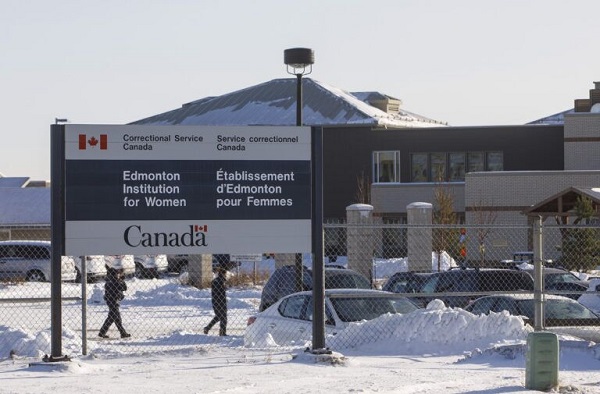National
Captain Jennifer Casey killed in Snowbirds accident

From: National Defence
One Canadian military member killed and one injured in CF Snowbirds accident
Ottawa – National Defence / Canadian Armed Forces
One member of the Canadian Armed Forces (CAF) was killed on Sunday May 17, 2020 and one other member injured in an accident involving a Royal Canadian Air Force (RCAF) CT-114 Tutor aircraft in the vicinity of Kamloops, British Columbia.
Killed was Captain Jennifer Casey, the team’s Public Affairs Officer, originally from Halifax, Nova Scotia.
Captain Richard MacDougall, one of the team’s coordinators and pilot of the aircraft, was injured and is being treated for his injuries.
The Canadian Forces Snowbirds were deployed on Operation INSPIRATION, a cross-Canada tour to lift the spirits of Canadians and salute front-line workers during the COVID-19 pandemic. At the time of the accident, the CF Snowbirds were taking off from the airport in Kamloops, British Columbia.
The CAF are providing our members and their families with as much support as possible to help them through this difficult time.
A RCAF Flight Safety team will depart from Ottawa shortly to investigate the circumstances of the accident and will begin their work immediately upon arrival.
Additional multimedia

Quotes
“I was deeply saddened to learn of the loss of one of our Canadian Armed Forces members in a tragic incident involving one of our Snowbirds’ aircraft in Kamloops, British Columbia. I am sending my sincerest condolences to the family, friends and colleagues of Captain Jenn Casey. I am also wishing a rapid and complete recovery for Captain Richard MacDougall.
Canadians look at the Snowbirds as a source of joy and an exhibition of the incredible feats that our people in uniform are capable of. Operation INSPIRATION was intended to lift the spirit of Canadians at this difficult time and the Snowbirds accomplished their mission. I know that all Canadians grieve this tragic loss.”
The Honourable Harjit S. Sajjan, Minister of National Defence.
“Another tragedy has hit our Canadian Armed Forces. The Snowbirds’ Op INSPIRATION brought joy to Canadians across our country. Today, we come together in their time of need. To the family of Captain Jenn Casey we send our condolences, know that she was an inspiration to many and she will be missed. To Captain Richard MacDougall, we wish you a speedy recovery.”
General Jonathan Vance, Chief of the Defence Staff
“The whole Defence Team family is deeply saddened by the loss of Captain Jenn Casey. Deepest condolences to her loved ones, and to her colleagues in the Snowbirds, the RCAF and her fellow Public Affairs Officers. We also wish Captain Richard MacDougall a steady recovery through these most difficult of times.”
Jody Thomas, Deputy Minister of National Defence
“Today, the RCAF has suffered another tragic loss of a dedicated member of the RCAF team. We grieve alongside Jenn’s family, friends and colleagues and are deeply saddened. Our thoughts also go out to the loved ones of Captain Richard MacDougall. We hope for a swift recovery from his injuries.”
Lieutenant General Al Meinzinger, Commander Royal Canadian Air Force
Quick facts
- The CT-114 Tutor fleet has been placed on an operational pause and Op INSPIRATION has been delayed indefinitely.
- Captain Jenn Casey is from Halifax, Nova Scotia. She joined the Canadian Armed Forces in August 2014 as a direct entry officer. Captain Casey joined the Canadian Forces Snowbirds in November 2018.
- A Flight Safety Investigation will be conducted to ensure our personnel can continue to have confidence in our equipment and procedures. One of the aims of the Flight Safety program is to investigate such occurrences with the objective of quickly identifying effective preventive measures that will either prevent or reduce the risk of similar occurrences in the future.
Business
Canadian Police Raid Sophisticated Vancouver Fentanyl Labs, But Insist Millions of Pills Not Destined for U.S.

 Sam Cooper
Sam Cooper
Mounties say labs outfitted with high-grade chemistry equipment and a trained chemist reveal transnational crime groups are advancing in technical sophistication and drug production capacity
Amid a growing trade war between Washington and Beijing, Canada—targeted alongside Mexico and China for special tariffs related to Chinese fentanyl supply chains—has dismantled a sophisticated network of fentanyl labs across British Columbia and arrested an academic lab chemist, the RCMP said Thursday.
At a press conference in Vancouver, senior investigators stood behind seized lab equipment and fentanyl supplies, telling reporters the operation had prevented millions of potentially lethal pills from reaching the streets.
“This interdiction has prevented several million potentially lethal doses of fentanyl from being produced and distributed across Canada,” said Cpl. Arash Seyed. But the presence of commercial-grade laboratory equipment at each of the sites—paired with the arrest of a suspect believed to have formal training in chemistry—signals an evolution in the capabilities of organized crime networks, with “progressively enhanced scientific and technical expertise among transnational organized crime groups involved in the production and distribution of illicit drugs,” Seyed added.
This investigation is ongoing, while the seized drugs, precursor chemicals, and other evidence continue to be processed, police said.
Recent Canadian data confirms the country has become an exporter of fentanyl, and experts identify British Columbia as the epicenter of clandestine labs supplied by Chinese precursors and linked to Mexican cartel distributors upstream.
In a statement that appears politically responsive to the evolving Trump trade threats, Assistant Commissioner David Teboul said, “There continues to be no evidence, in this case and others, that these labs are producing fentanyl for exportation into the United States.”
In late March, during coordinated raids across the suburban municipalities of Pitt Meadows, Mission, Aldergrove, Langley, and Richmond, investigators took down three clandestine fentanyl production sites.
The labs were described by the RCMP as “equipped with specialized chemical processing equipment often found in academic and professional research facilities.” Photos released by authorities show stainless steel reaction vessels, industrial filters, and what appear to be commercial-scale tablet presses and drying trays—pointing to mass production capabilities.
The takedown comes as Canada finds itself in the crosshairs of intensifying geopolitical tension.
Fentanyl remains the leading cause of drug-related deaths in Canada, with toxic supply chains increasingly linked to hybrid transnational networks involving Chinese chemical brokers and domestic Canadian producers.
RCMP said the sprawling B.C. lab probe was launched in the summer of 2023, with teams initiating an investigation into the importation of unregulated chemicals and commercial laboratory equipment that could be used for synthesizing illicit drugs including fentanyl, MDMA, and GHB.
The Bureau is a reader-supported publication.
To receive new posts and support my work, consider becoming a free or paid subscriber.
Invite your friends and earn rewards
2025 Federal Election
Carney needs to cancel gun ban and buyback

 Gage Haubrich
Gage Haubrich
The Canadian Taxpayers Federation is calling on Liberal Leader Mark Carney to stop the gun ban and buyback after he announced he would continue with the scheme.
“Carney needs to scrap this plan and stop wasting taxpayer’s money on it,” said Gage Haubrich, CTF Prairie Director. “Planning to spend potentially billions of dollars on a program that is not going to make Canadians safer is a waste of money.
“Carney needs to be cancelling this wasteful plan, not doubling down on it.”
Conservative Leader Pierre Poilievre is promising to get rid of Ottawa’s gun bans.
The government said the buyback would cost taxpayers $200 million in 2019. Only buying back the guns could cost up to $756 million, according to the Parliamentary Budget Officer. Government documents show that the buyback is now likely to cost almost $2 billion.
The banned gun list includes more than 2,000 different types of firearms.
Every year since the gun ban was announced in 2020, violent gun crime in Canada has increased.
New Zealand conducted a similar, but more extensive, gun ban and buyback in 2019. New Zealand had 1,216 violent firearm offenses in 2023. That’s 349 more offences than the year before the buyback.
Experts also agree that the buyback won’t make Canadians any safer.
The National Police Federation, the union representing the RCMP, says Ottawa’s buyback “diverts extremely important personnel, resources, and funding away from addressing the more immediate and growing threat of criminal use of illegal firearms.”
“Buyback programs are largely ineffective at reducing gun violence, in large part because the people who participate in such programs are not likely to use those guns to commit violence,” said University of Toronto professor Jooyoung Lee
“Experts say that this gun ban and buyback won’t do anything to make Canadians safer,” Haubrich said. “Carney needs to listen to the experts and commit to cancelling this scheme before it costs taxpayers any more money.”
-

 Also Interesting2 days ago
Also Interesting2 days agoMortgage Mayhem: How Rising Interest Rates Are Squeezing Alberta Homeowners
-

 2025 Federal Election2 days ago
2025 Federal Election2 days agoConservative Party urges investigation into Carney plan to spend $1 billion on heat pumps
-

 Also Interesting2 days ago
Also Interesting2 days agoExploring Wildrobin Technological Advancements in Live Dealer Games
-

 2025 Federal Election2 days ago
2025 Federal Election2 days agoCommunist China helped boost Mark Carney’s image on social media, election watchdog reports
-

 2025 Federal Election2 days ago
2025 Federal Election2 days agoFifty Shades of Mark Carney
-

 2025 Federal Election2 days ago
2025 Federal Election2 days agoCorporate Media Isn’t Reporting on Foreign Interference—It’s Covering for It
-

 Justice2 days ago
Justice2 days agoCanadian government sued for forcing women to share spaces with ‘transgender’ male prisoners
-

 Business1 day ago
Business1 day agoStocks soar after Trump suspends tariffs




